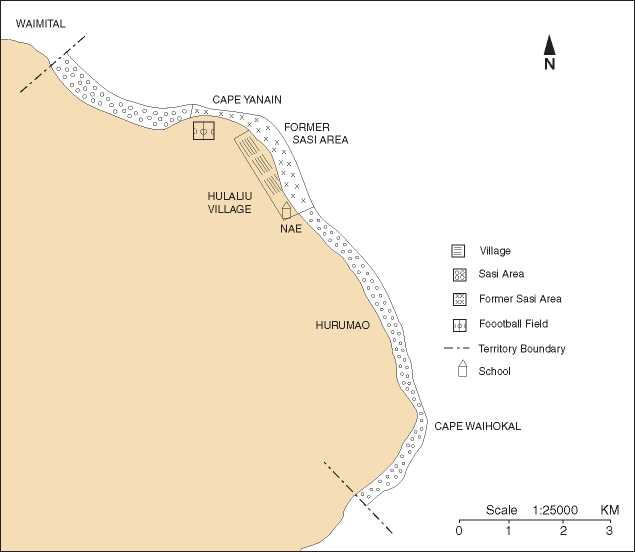Chapter 13
Desa Hulaliu, Haruku Island1
13.1 Physical, Biological and Technical Attributes
13.1.1 Physical environment
Hulaliu is situated on the north side of Haruku Island between the two coastal villages of
Aboru in the east and Kariu in the west (see Figure 1). Similar to the other villages, the people
explained how they originally lived in the hills. The village was subdivided into 12 clans
(margas) under two kapitans, Taihutu and Noija. Later a third kapitan, Siahaya, was included
in the village structure. Under the influence of foreign traders, the villagers were converted
to Islam. In 1527, the Portuguese arrived in Haruku Island and they attacked the villages.
Under the Portuguese, the villagers changed their religion to Catholicism. When the Dutch
arrived in 1590, Hulaliu, as well as the villages of Kailolo, Pelauw, Rohomoni and Kabauw,
settled on the coast. Hulaliu became a Protestant village.
Behind the village, lies an extensive garden area that runs southwards in the direction of the
village of Aboru. The village territory of Hulaliu stretches from the point of Haluamuna to
the headland at Waihokol (see Figure 13.1).

Figure 13.1. Sketch map of Hulaliu (features not necessarily to
scale).
1 For data tables see Appendix 3.
Desa Hulaliu, Haruku Island 159
More intriguing information
1. The name is absent2. The name is absent
3. The name is absent
4. A Brief Introduction to the Guidance Theory of Representation
5. Climate change, mitigation and adaptation: the case of the Murray–Darling Basin in Australia
6. PEER-REVIEWED FINAL EDITED VERSION OF ARTICLE PRIOR TO PUBLICATION
7. The name is absent
8. Comparison of Optimal Control Solutions in a Labor Market Model
9. A multistate demographic model for firms in the province of Gelderland
10. The Mathematical Components of Engineering